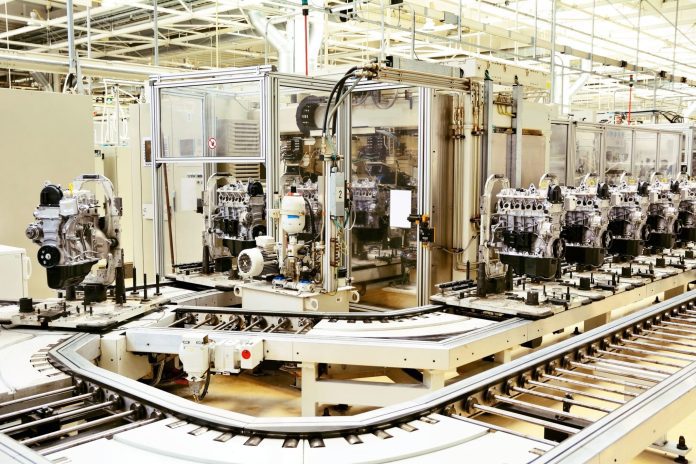Vendors, chip makers and other tech firms are already enabling 5G manufacturing at several factories globally
5G technology offers manufacturers the chance to build smart factories and truly take advantage of technologies such as automation, artificial intelligence, augmented reality for troubleshooting, and the Internet of Things (IoT). 5G technologies provide the network characteristics that are essential for manufacturing. Low latency and high reliability are needed to support critical applications in the manufacturing field. Several companies, including vendors and chip makers, are enabling 5G implementation to improve operations in different industrial environments. Here we briefly describe some implementations by five key companies.
ERICSSON
Ericsson showed the benefits that the deployment of 5G could have in an industrial environment at its own factory in Estonia. In a project carried out in partnership with Nordic carrier Telia, Ericsson deployed automated guided vehicles (AGVs), AR tech and environmental sensors at its 25,000 square meter industrial facility in Tallinn.
Ericsson explained AGVs are being used to move components from the warehouse to the production line. The Swedish vendor noted that the AGVs cut the time taken to deliver parts and the risk of damage, using the cellular network to livestream data and video, and open doors on their route. AR glasses and terminals are being used to troubleshoot, providing interactive testing of components quality control processes. Meanwhile, Ericsson also highlighted that environmental monitoring sensors scrutinize levels of moisture, temperature, noise, light and carbon dioxide with the aim of improving working conditions for workers.
NOKIA
Earlier this year, Edzcom and Nokia announced plans to build a private Standalone (SA) 5G network for fellow Finnish firm Konecranes at the company’s factory in the municipality of Hyvinkää about 50 kilometers north of Helsinki.
Konecranes manufacturers and services cranes and lifting equipment. The new private 5G network will be geared towards “advanced R&D work” for factories and ports. Nokia said it is supplying a new radio, core, and transport network to the facility in Hyvinkää. The Hyvinkää upgrade for Konecranes covers the firm’s “smart factory, research and development facilities, and test cranes”, according to Nokia. The Finnish vendor said: “One use case example is the deployment of high-resolution wireless cameras to improve load handling safety, site security and operational integrity.”
HUAWEI
Last year, GSMA, China Mobile, Huawei and Haier, a Chinese manufacturer of home appliances and consumer electronics, completed a proof of concept encompassing the deployment of edge computing, 5G and machine vision into Haier’s manufacturing environment.
Stainless steel refrigerators, one of the main products manufactured by Haier, can suffer imperfections through scratching and denting during the course of the production process. Therefore, Haier manually checks every refrigerator that comes from the production line for defects in the stainless steel, which can be a time-consuming task. The use of edge computing and 5G means that near-real time analysis takes place so refrigerators can be returned to the production line almost instantly.
Huawei and China Mobile implemented a 5G connected MEC architecture inside the Haier factory to enable high-volume image processing with minimal latency to ensure no delays to the production line.
The Haier factory has mounted a 500W industrial camera onto a robotic arm, with high intensity lighting, which is able to scan the refrigerators as they come off the production line.
The 5G network is required to transfer the large images produced by the industrial camera whilst maintaining low latency.
QUALCOMM
In May, Qualcomm announced its first “purpose-built” 5G modem for industrial IoT applications. The new modem-to-antenna solution is pitched at the manufacturing, energy, agriculture, construction, mining, and retail sectors. The Qualcomm 315 5G IoT Modem-RF System incorporates the latest Release 16 features of the 5G standard for industrial IoT.
It also supports applications currently served by LTE networks, with “pin-to-pin compatibility” with legacy LTE modules, providing a pathway to migrate existing applications onto new 5G networks. The unit supports global 5G NR sub-6GHz bands and operates in stand-alone (SA) only mode, with the capability to switch to LTE as needed. It can be deployed over private or public 5G networks, leveraging network slicing or in isolation.
Bosch said the new devices will enable “interesting new functions for industrial IoT” and help to “open up new applications with 5G”. Siemens said the release will help it to develop “state-of-the-art industrial 5G products”. Schneider Electric said the launch addresses industrial requirements for “massive bandwidth, reliability, and performance”.
Rival module maker Telit stated: “This new system will serve a number of commercial and industrial use cases where, until now, there hasn’t been a 5G connectivity solution available — in particular energy distribution, smart grid technologies, and industrial control and automation.”
ZTE
ZTE, in partnership with China Mobile, has recently upgraded Xinfengming Group’s 5G intelligent manufacturing platform, following the completion of the test and verification of the “i – wireless 5G intelligent and one-stop local network” project.
The Xinfengming 5G manufacturing platform has been upgraded using ZTE’s NodeEngine service. ZTE noted that this 5G network enables the Xinfengming Group to improve the use of AGV trucks, visual detection devices, and automatic assembly devices.
For more 5G manufacturing content, check out the following:
- What is 5G manufacturing and what does it mean for productivity?
- Top 5 5G manufacturing use cases
- Three 5G manufacturing case studies: Audi, Haier, Bosch
- What’s the role of a digital twin in smart manufacturing?
- 5G manufacturing use case spotlight: Automated guided vehicles
- 5G manufacturing use case spotlight: Real-time video analytic
- How to improve Overall Equipment Effectiveness with 5G
- 5G manufacturing use case spotlight: Additive manufacturing
- What is lean manufacturing and how can 5G help?

